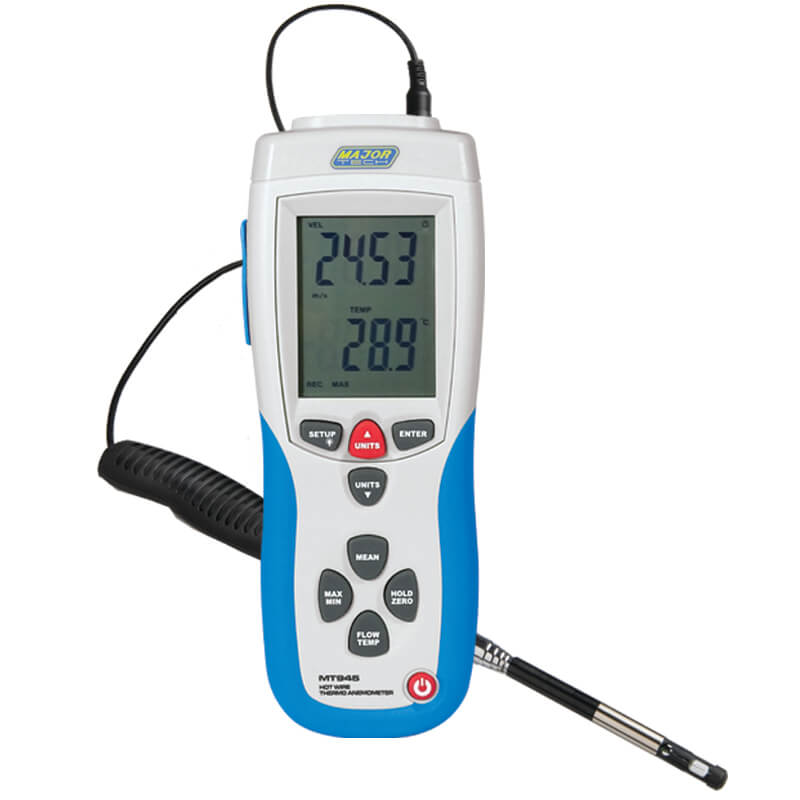All You Need to Find Out About Anemometers: Exactly How They Work, Why They Matter, and Where to Make use of Them
Anemometers, however usually overlooked in the world of scientific tools, play an essential duty in different areas, using valuable understandings right into wind speed and air movement patterns. Understanding the technicians behind these devices is essential for any individual looking for to harness the power of this data. From meteorologists tracking climate patterns to engineers making structures with wind tons in mind, the applications of anemometers are far-ranging and diverse. As we explore the intricacies of anemometer innovation, we will certainly uncover the inner functions of these tools, their importance, and the crucial factors to consider when choosing the appropriate anemometer for specific applications.

Anemometer Essentials
An important instrument used to gauge wind rate and instructions, the anemometer plays a vital function in meteorology and various markets. An anemometer usually includes three or 4 mugs that turn in the wind, a vane that points into the wind, and sensors to track the motions or rotations. By computing the rotations or movements over a specific amount of time, the anemometer can figure out wind speed. The vane helps establish wind instructions by pointing right into the wind, supplying important information for weather condition forecasting, aviation, maritime procedures, environmental monitoring, and wind power applications.
There are various kinds of anemometers readily available, including mug anemometers, vane anemometers, hot-wire anemometers, and sonic anemometers, each with its special features and applications. Cup anemometers are commonly used for fundamental wind rate dimensions, while vane anemometers are liked for directional measurements. Hot-wire anemometers appropriate for reduced airspeeds, and sonic anemometers are optimal for high-precision dimensions in research and commercial settings. Comprehending the fundamentals of anemometers is important for exact wind information collection and analysis throughout various sectors.
Principles of Anemometer Operation
Building on the foundational understanding of anemometer basics, the principles of anemometer procedure elucidate the mechanics behind wind speed and direction measurements. Anemometers operate on the principle of air flow influencing a sensor, triggering it to turn. Cup anemometers, for instance, have three or more mugs that capture the wind, creating them to rotate faster as the wind speed boosts. The rotation speed is after that exchanged click for more info a wind rate dimension. Vane anemometers, on the various other hand, utilize a tail or a probe that straightens itself with the wind direction, supplying a measurement find here of wind direction based upon the alignment of the sensing unit. Hot-wire anemometers count on a warmed cable that cools down as wind passes over it, with the rate of cooling determining the wind rate. Ultrasonic anemometers action wind rate and instructions by examining the time it takes for ultrasonic signals to travel in between transducers. Recognizing these concepts is crucial for reliable and accurate wind dimensions in different applications.
Significance of Anemometers
Anemometers play a critical duty in gauging wind rate and instructions, giving essential data for weather forecasting, environment researches, ecological surveillance, and aeronautics procedures. Meteorologists depend on anemometers to collect precise wind data, helping them understand weather patterns, predict tornados, and concern prompt warnings to the public. Wind farm operators make use of anemometers to analyze wind problems and maximize electricity production from wind generators.
Applications Across Numerous Industries
In the sustainable energy market, anemometers play a critical role in evaluating wind conditions for wind ranch positionings, making sure optimum power manufacturing. Industries like construction and mining utilize anemometers to keep track of wind speeds, essential for security procedures, particularly when working at heights or in open-pit mines article source where solid winds can posture threats. In farming, anemometers help farmers in managing plant splashing by giving real-time information on wind rate to prevent drift.

Picking the Right Anemometer for Your Needs
For general purposes, a cup anemometer is suitable for measuring wind rate, while a vane anemometer offers wind direction data. Hot-wire anemometers are optimal for reduced airspeed dimensions, and ultrasonic anemometers provide high precision and sturdiness.

Verdict
In verdict, anemometers play a crucial function in gauging wind speed and direction throughout numerous industries. It is crucial to take into consideration the importance of anemometers in order to make educated choices when choosing the most suitable gadget for gauging wind problems.
There are various types of anemometers offered, including cup anemometers, vane anemometers, hot-wire anemometers, and sonic anemometers, each with its special attributes and applications. Cup anemometers are generally used for basic wind speed dimensions, while vane anemometers are favored for directional dimensions. Hot-wire anemometers are ideal for low airspeeds, and sonic anemometers are suitable for high-precision dimensions in research and industrial settings.Building on the foundational understanding of anemometer basics, the principles of anemometer procedure clarify the auto mechanics behind wind rate and instructions dimensions. For basic objectives, a mug anemometer is ideal for gauging wind rate, while a vane anemometer gives wind instructions information.